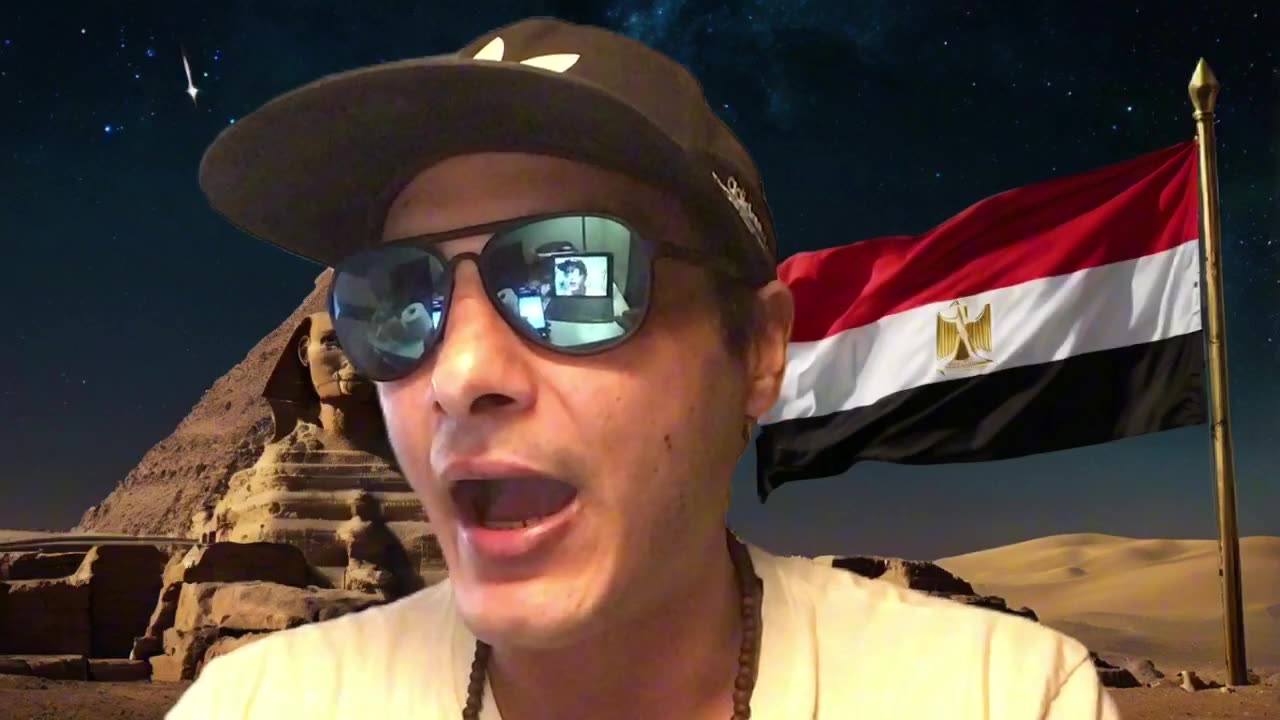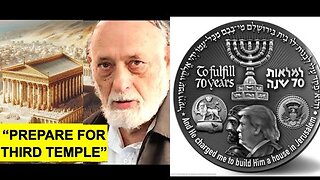Premium Only Content

Afrocentrism part 3 , DNA , Language and culture ,Evidence! 🇪🇬 ⚔️
My evidence is recorded in Stone! , DNA! , Language!, Culture!, Tradition!,Riligion!, this is Egypt ! 🪖 🇪🇬 ⚔️
Ladies and Gentlemen,
Thank you for coming together today to explore a fascinating and often misunderstood topic: the continuity between the modern Egyptian people and their ancient ancestors. This subject is not only vital to understanding the cultural and historical identity of Egypt but also crucial in appreciating the profound legacy that has shaped the world we live in today.
For centuries, the allure of ancient Egypt has captivated the imaginations of people worldwide. The grandeur of the pyramids, the mysteries of the pharaohs, and the richness of their culture continue to inspire awe and wonder. But as we marvel at this ancient civilization, it is essential to recognize that the people who built this legacy are not distant figures lost to the sands of time. Instead, they are closely connected to the modern Egyptian people.
To understand this continuity, we must delve into a multifaceted exploration of genetic, linguistic, and cultural evidence.
### Genetic Continuity
One of the most compelling pieces of evidence for the continuity between ancient and modern Egyptians comes from genetic studies. Recent advancements in genetic research have allowed scientists to compare the DNA of ancient mummies with that of contemporary Egyptians. A comprehensive study published in Nature Communications in 2017 analyzed the genomes of ancient Egyptian mummies from Abusir el-Meleq, dating from 1400 BCE to 400 CE. The results revealed that ancient Egyptians shared a close genetic relationship with modern Egyptians, particularly those from the northern regions. This study highlighted that despite various invasions and migrations, the core genetic makeup of the Egyptian population has remained relatively stable over millennia.
### Linguistic Heritage
Language is another critical factor in tracing the continuity of a people. The modern Egyptian Arabic spoken today is infused with remnants of the ancient Egyptian language, particularly in terms of vocabulary, place names, and certain linguistic structures. Coptic, the liturgical language of the Coptic Orthodox Church, directly descends from the late stages of the ancient Egyptian language and serves as a bridge connecting the linguistic past with the present. This linguistic continuity underscores a deep-rooted cultural inheritance that has persisted despite external influences and changes in dominant languages over the centuries.
### Cultural and Societal Traditions
Cultural practices and societal structures provide further evidence of continuity. Many traditions observed in rural Egyptian communities today bear striking similarities to those of ancient times. For instance, agricultural practices along the Nile, traditional music, dance, and even certain religious rituals show a remarkable resemblance to those documented in ancient records. The celebration of certain festivals, such as Sham El-Nessim, a spring festival with origins in Pharaonic times, exemplifies how ancient customs have been preserved and adapted over generations.
### Archaeological Evidence
Archaeological evidence also supports the continuity between ancient and modern Egyptians. Excavations and studies of ancient settlements reveal patterns of life that resonate with contemporary Egyptian villages. The layout of homes, the tools used in daily life, and the artifacts found at these sites indicate a direct line of cultural transmission. This archaeological continuity is further strengthened by the enduring presence of iconic monuments, such as the pyramids and temples, which remain central to Egypt’s national identity and heritage.
### Historical Resilience and Adaptation
The history of Egypt is marked by periods of foreign rule, including the Persian, Greek, Roman, Arab, Ottoman, and British empires. Despite these invasions and the subsequent cultural influences, the Egyptian people have shown a remarkable ability to absorb and integrate new elements while maintaining their core identity. This resilience is a testament to the strength and continuity of Egyptian culture and society. It highlights an unbroken lineage that extends from the time of the pharaohs to the present day.
### The Modern Egyptian Identity
Modern Egyptians themselves recognize and celebrate their connection to their ancient past. This connection is evident in the pride they take in their heritage, the preservation of ancient monuments, and the continued study and reverence of their history. Institutions like the Egyptian Museum in Cairo and ongoing archaeological research reflect a national commitment to honoring and understanding their ancient roots.
In conclusion, the evidence for the continuity between ancient and modern Egyptians is robust and multifaceted. Genetic studies, linguistic heritage, cultural practices, archaeological findings, and historical resilience all point to a profound and enduring connection. The modern Egyptian people are not just the inheritors of a remarkable civilization; they are its direct descendants, carrying forward the legacy of their ancestors in their genes, their language, and their cultural traditions.
As we acknowledge and celebrate this continuity, we gain a deeper appreciation for the richness and resilience of Egyptian identity. This understanding enriches our perception of history and reinforces the importance of preserving and honoring the cultural heritage that defines us.
Thank you.
-
 14:41
14:41
Free Humanity
20 days agoSanhedrin! Prepare for Third Temple & Pedophile Psyop Trumps Golden Age!
6445 -
 LIVE
LIVE
TimcastIRL
1 hour agoElon Secret Child Scandal ERUPTS, Ashley St. Clair Story Goes Viral w/Bethany Mandel | Timcast IRL
14,172 watching -
 LIVE
LIVE
Kim Iversen
3 hours agoElon's Pumping Out Babies Like They're Tesla Model 3's | EU Panics Over Peace Talks, Wants More War
2,573 watching -
 DVR
DVR
Danny Polishchuk
6 hours agoAlex Stein Live In Studio Taking Your Calls - Low Value Mail Live Call In Show
634 -
 2:21:20
2:21:20
Robert Gouveia
3 hours agoTrump Goes to SCOTUS! Judge CAVES on DOGE? Fani Willis Not Happy!
29.2K7 -
 20:41
20:41
Stephen Gardner
3 hours ago🔥You Won't BELIEVE What JUST Happened To Don Trump Jr.!!
22K74 -

The StoneZONE with Roger Stone
1 hour agoEuropean Leaders Resist Trump Peace Overtures To Their Own Demise | The StoneZONE w/ Roger Stone
1.78K1 -
 9:29
9:29
AlaskanBallistics
2 hours agoWyoming Suppressors and Rifles at Shot Show 2025
2.41K2 -
 1:06:40
1:06:40
Donald Trump Jr.
6 hours agoThe Left is Taking one L After Another, Live with Michael Knowles | Triggered Ep. 217
92.4K81 -
 47:17
47:17
Kimberly Guilfoyle
6 hours agoWoke Gets DOGE’d, Live with AJ Rice & Jarrett Stepman | Ep. 197
70.9K32